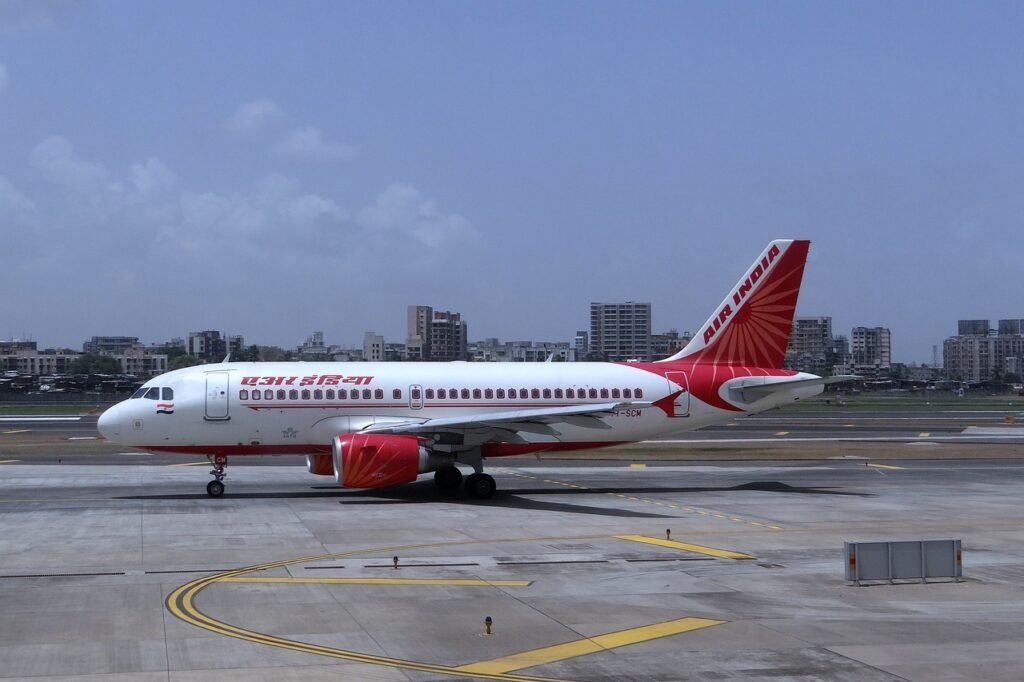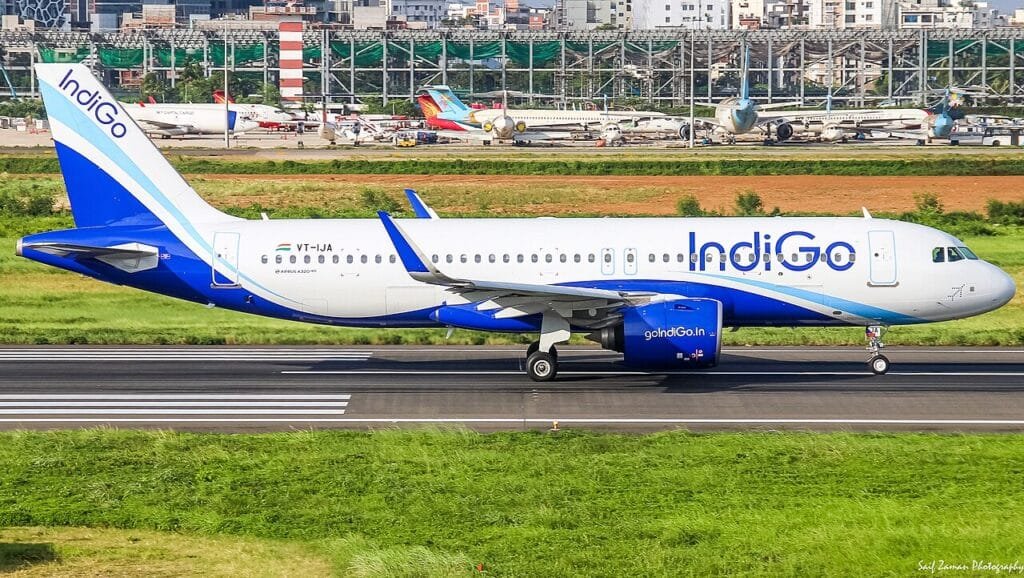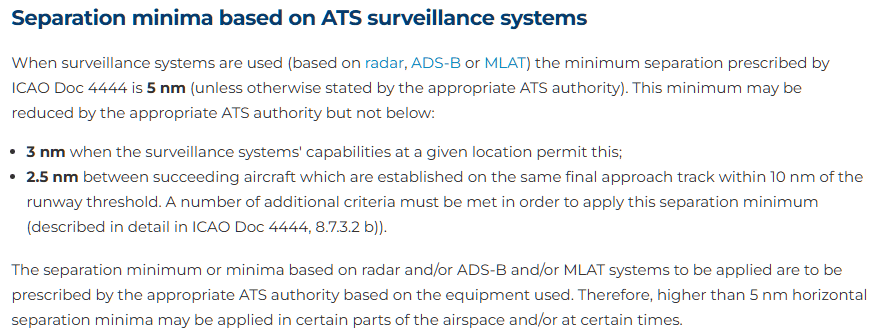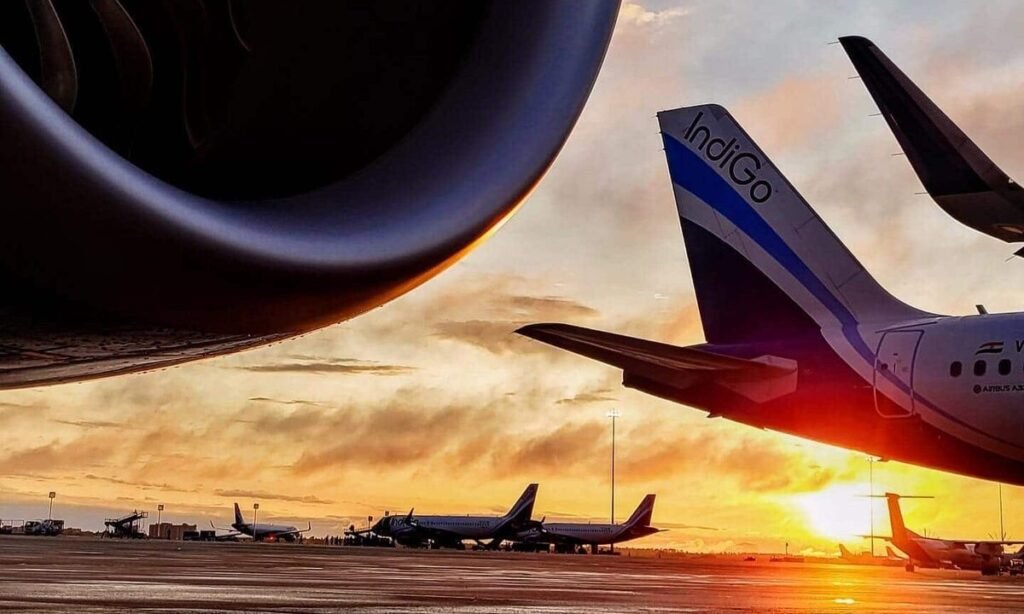- SHORT GLIMPSE
- Two Air India and IndiGo aircraft involved in close call.
- A look at what the international rules say on aircraft separation.
- Do you know this particular IndiGo aircraft had previously received TCAS warning.
In an eye-grabbing incident at Mumbai Airport, two Airbus A320 aircraft belonging to two largest airlines in India had a close call. An IndiGo aircraft landed just seconds after an Air India aircraft departed. In this article, we are going to first see the details of the incident and then, we will see whether this is normal or dangerous.
First, let us take a look at the incident.
Mumbai Airport: Close Call Involving IndiGo and Air India A320s
On June 8, two Airbus A320neos had a close call at Mumbai Airport. IndiGo A320 registered as VT-ISV was operating flight 6E5053 from Indore to Mumbai. Air India A320 registered as VT-RTS was operating flight AI657 from Mumbai to Trivandrum.

The IndiGo flight from Indore landed just seconds after the Air India flight departed for Trivandrum. To be precise, the IndiGo jet landed at 06:16 AM, while the Air India jet departed at 06:15 AM.
In the morning, planespotter Karan Bhanushali, who has an Instagram page with username csmia.spotter_ was filming the aircraft departing and arriving from Mumbai Airport. He captured this incident. He was the first one to share it on the internet. Below, you can see the video of the incident.
Airline Statements & DGCA Action
IndiGo Airlines in a statement said that the cockpit crew followed the instructions of the Air Traffic Controllers. It reiterated that safety is paramount for the airline. It has reported this incident to DGCA based on the established procedures.
Air India too gave a similar response. It said that the aircraft was cleared to enter to runway by the Air Traffic Control. Eventually, it was cleared to depart and the pilots followed the ATC instructions. The Airbus A320neo continued with the climb.

After this matter was flagged on social media, DGCA launched an investigation. The Air Traffic Control Official involved in this incident has been removed from duty, pending the inquiry result.
Previously as well, such incidents have occurred at Mumbai Airport. In February 2024, a FlyArystan Airbus A320 entered an active runway, on which an Air India Airbus A319 was performing a takeoff roll. The A319 pilots aborted the takeoff after seeing another aircraft crossing the runway. An investigation was launched by DGCA, but there has been no update since then.
Dangerous or Normal
This is a question asked by many people as there is a lot of confusion. Some people are calling this a dangerously close call, while some are saying that this is a fine and normal event at CSMIA. Before getting into the details, let me tell you the fact that CSMIA is the busiest single-runway airport in Asia. ATC officials are allowed to clear up to 2 arrivals and two departures within three minutes as per the SOP. In an hour, the runway handles 46 Air Traffic Movement (ATMs).

Let us see now what is stated in the international rulebooks. In India, DGCA does not prescribe any such rules. So, I decided to take a look at the International Civil Aviation Organization (ICAO) rules. Here is what is stated in ICAO Doc 4444.
When surveillance systems like radar, ADS-B, or MLAT are used, the minimum separation between two aircraft should be five nautical miles. In some conditions, this can come down to 2.5 nautical miles but not below.

I further checked the rules stated by the Federal Aviation Administration (FAA) to get more clarity. FAA prescribes that for aircraft at the same altitude within the 40-mile range of the radar-antenna site, a minimum separation of 3 miles is mandatory.

These rules are applied to all the flight phases. Both of them can be amended based on airport conditions. I was unable to find any rule, that talks exclusively about yesterday’s incident.
Expert Comments
Hindustan Times talked to a pilot, who said that sometimes, the ATC squeezes a departure to accommodate a landing aircraft. During the departure clearance, the ATC uses the word “IMMEDIATE”. This signifies that they want the aircraft to depart as quickly as possible so that another airliner can land at the same runway end. Similarly, the landing aircraft is expected to hold its minimum approach speed in order to maintain the separation. The pilot told HT that in this case, it seems that these may not have happened.

General Secretary of ATC Guild, Alok Yadav told the publication that in case visibility at the airport is good, the ATC officials can reduce the separation minima between two aircraft. In this case, visibility was good. It can be seen in the video that the Air India plane had departed when the IndiGo flight was touching down. He added that the investigation by DGCA will look at whether the ATC officials and pilots followed all the established procedures.
IndiGo Aircraft Had Air-Prox in the Past
The IndiGo aircraft involved in this incident is an Airbus A320neo registered as VT-ISV. This aircraft has already been involved in an air prox incident.
In January 2022, two IndiGo Airbus A320s were involved in such an incident. The ATC at Bengaluru Airport allowed both aircraft to depart at the same time from parallel runways. ATC was not authorized to do so as parallel departures were not approved by the DGCA.

After departure, one aircraft initiated a turn. Both planes received TCAS warnings, following which the ATC corrected their course. The minimum separation was 0.9 NM laterally and just 100 feet vertically. DGCA later suspended the ATC official.
My Question!
One question doing rounds in my head. Maybe, I am overthinking. Yesterday, both aircraft departed and landed normally. But if this comes under normal operations at CSMIA, then imagine if the IndiGo aircraft wanted to go around at the last minute. Technically, in an already busy airspace, you have two mid-sized jets departing from the same runway in the same trajectory. Isn’t this dangerous?
Share your thoughts in the comment section.
With Inputs From Hindustan Times
Featured Image Credits: Times of Aviation
Read the Latest Aviation News on Times of Aviation
Read More: Bilateral Rights May Increase If TDP Gets Civil Aviation Ministry
Website Disclaimer: Times of Aviation does not claim copyright ownership of any information or images used on this website. Usage of content falls under fair use.


